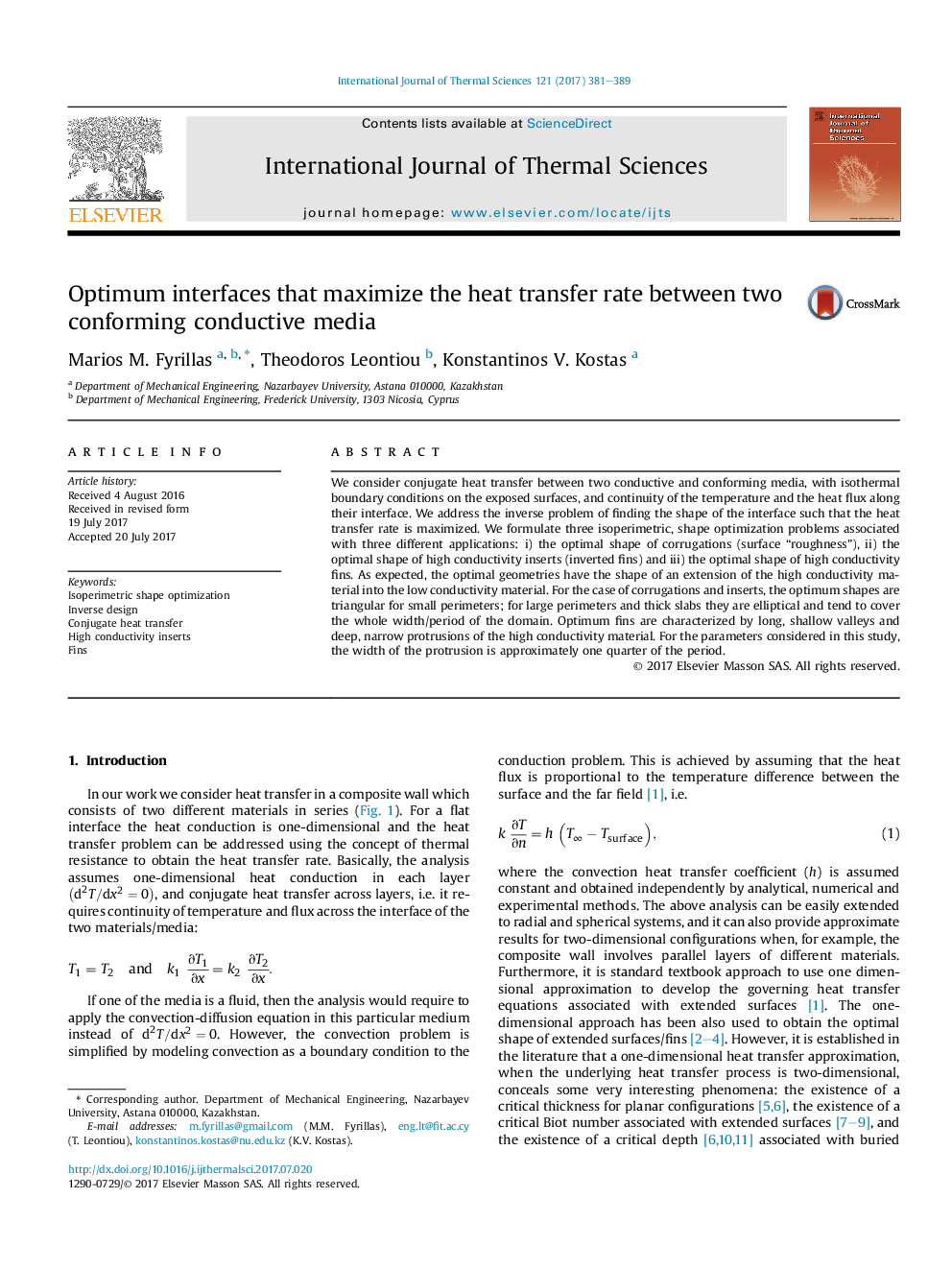| Article ID | Journal | Published Year | Pages | File Type |
|---|---|---|---|---|
| 4995177 | International Journal of Thermal Sciences | 2017 | 9 Pages |
Abstract
We consider conjugate heat transfer between two conductive and conforming media, with isothermal boundary conditions on the exposed surfaces, and continuity of the temperature and the heat flux along their interface. We address the inverse problem of finding the shape of the interface such that the heat transfer rate is maximized. We formulate three isoperimetric, shape optimization problems associated with three different applications: i) the optimal shape of corrugations (surface “roughness”), ii) the optimal shape of high conductivity inserts (inverted fins) and iii) the optimal shape of high conductivity fins. As expected, the optimal geometries have the shape of an extension of the high conductivity material into the low conductivity material. For the case of corrugations and inserts, the optimum shapes are triangular for small perimeters; for large perimeters and thick slabs they are elliptical and tend to cover the whole width/period of the domain. Optimum fins are characterized by long, shallow valleys and deep, narrow protrusions of the high conductivity material. For the parameters considered in this study, the width of the protrusion is approximately one quarter of the period.
Related Topics
Physical Sciences and Engineering
Chemical Engineering
Fluid Flow and Transfer Processes
Authors
Marios M. Fyrillas, Theodoros Leontiou, Konstantinos V. Kostas,
